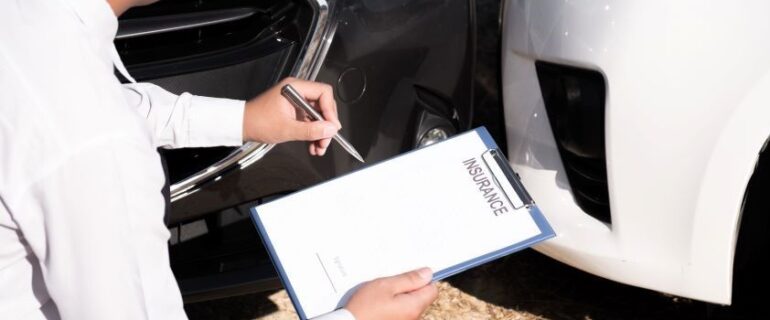Many or all of the products and brands we promote and feature including our ‘Partner Spotlights’ are from our partners who compensate us. However, this does not influence our editorial opinion found in articles, reviews and our ‘Best’ tables. Our opinion is our own. Read more on our methodology here.
If you have a car on finance, GAP insurance is useful cover to have.
As you pay off your car finance agreement, you will often owe more than your car is currently worth as it will lose value over time. This is known as being in negative equity.
While this isn’t normally a problem, if you write off your car or it is stolen, your car insurer will only pay out the car’s current market value which could leave you still owing money to the finance provider. GAP insurance will pay off this outstanding finance which means you won’t be left out of pocket.
However, while GAP insurance covers this kind of negative equity caused by depreciation, you may need to take out a specialist policy if you want to cover any negative equity rolled over from a previous finance agreement.
Read on to find out more about negative equity and GAP insurance and what exactly can be covered by a policy.
Compare Gap Insurance
Whether you lease your vehicle or are looking
for a brand new replacement, see offers for
GAP insurance
What is negative equity?
Essentially, you are in negative equity if you owe more to the leasing or car finance provider than the car is worth.
This is very common in car finance deals because of depreciation. For most of the time that you are making payments, you will owe more than the car is currently worth as the car is losing value faster than you are repaying the loan.
For example, if you take out car finance for £12,000, after 6 months you may still owe around £11,000 but the car will have depreciated so it may only be worth £10,000. In this case, you would be in negative equity of £1,000.
If you keep your car for the whole finance deal and it’s not written off or stolen, being in negative equity won’t be an issue. Eventually, your payments will catch up to the value of your car as depreciation slows, so by the end of your finance term everything should be even.
But what about if you write off your car during your car finance agreement? Your car insurer will pay out the current market value of your car, but you are likely to owe the finance provider more than this.
» MORE: Car finance and negative equity
Does GAP insurance cover negative equity?
If you write off your car owing more to the finance provider than your car is worth at the time, GAP insurance will cover this negative equity. However, if you have any negative equity rolled over on your finance from a previous deal, GAP insurance may not cover this.
For those with a standard car finance deal that are simply paying off the value of their car, GAP insurance will cover the difference between your car insurance payout and the amount you still owe on your finance agreement. It will clear any negative equity so you won’t owe money for a car you can’t use.
Where things can get complicated is if you have rolled over negative equity from a previous car finance agreement onto your current deal.
Rolled over negative equity
Sometimes, cars depreciate faster than the finance provider predicted. This is more likely to happen if you took out the car on a longer contract or put down a smaller deposit.
If you have your car and make repayments to the end of the contract, this may not be much of an issue as you can return the car to the provider. However, if you want to exchange your car part-way through a contract, it can be more of a problem.
At this point your payments may not have caught up with your car’s depreciation, especially if it has fallen faster than anticipated, so you may be left owing money to the provider even after you return the car.
You could pay off this sum to clear it, or, if you take out a new finance contract, you may be able to transfer the negative equity from your previous deal into your new agreement.
For example, you may want to exchange your car that is now worth £8,000. However, if you still owe £9,000, this would leave you with £1,000 of negative equity after you return your car. You could choose to carry over this negative equity. So, if your new car finance contract was initially £15,000, with the extra £1,000 added to it, you would borrow a total of £16,000 – more than the value of the car.
This negative equity would be added to your main loan which would increase your monthly repayments.
Your car finance provider should tell you if this situation applies to you, but if you are unsure check your documents or contact your provider.
Specialist negative equity cover
Most GAP insurers state that they will not cover any negative equity rolled over onto a car finance contract. So, based on the example above, they would not cover the £1,000 you carried over. You would have to cover this cost out of your own pocket instead.
However, some GAP insurers allow you to buy an optional add-on that can cover extra negative equity carried over from a previous agreement. So, if you don’t want to cover the costs of this yourself in the event of a write-off, it is worth looking out for insurers that can provide specialist negative equity cover.
Be aware that GAP providers will usually set a maximum limit for the amount of extra negative equity they will cover.
Next steps
If you have car finance then it may be worth getting GAP insurance so you’re not left with a debt to repay if your car is written off.
If you have negative equity from a previous finance deal on your current contract, you should decide whether you are willing to cover the cost of this yourself in the event of an accident, or if you want to purchase an add-on policy to cover it. Bear in mind that not all providers will offer this extra negative equity cover.
To help you understand your options when buying GAP cover, check out our guide on when and where you can purchase GAP insurance.
Image source: Getty Images
Dive even deeper

What is GAP insurance? And what does it cover?
GAP insurance is an optional cover that can protect you against depreciation if your car is stolen or written off. Find out more about what GAP insurance covers, how it works and how it could help you.

What Are the Main Types of GAP Insurance? Which Type Do You Need?
There are different types of GAP insurance that are suitable for different situations. The best GAP insurance for you will depend on when you buy the policy, how you bought your car, and what you want to get from your policy.


